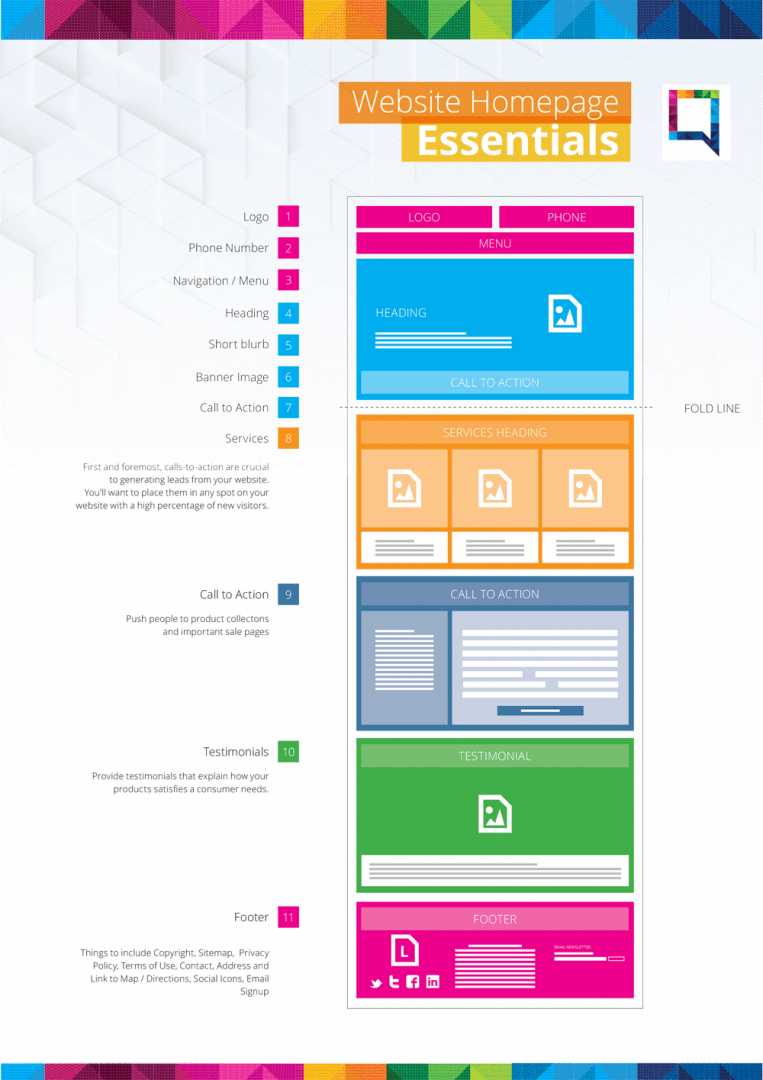What makes a great website? Part 1 Home Page
In this article we look at the fundamentals of what makes a great website; from design to functionality, user experience (UX) and conversion, so that you optimise and provide the best possible chance for your website to be found by search engines and convert visitors into enquiries.
To assist we have created the below wireframe, explaining the layout and architecture of the site. This article will look at the home page only to begin with and will focus on the front end design and functionality, not backend code and site mark-up, we will discuss this in another article.
Website home page essentials
Logo and phone number should be in the header, with the phone number usually
located in the top right hand corner, ensure the number is clickable to dial
for mobiles.
Location, Location, Location
Above the fold should feature a banner or video area to promote your
product or service, as this is the most important real estate on your site.
Call to actions
Be sure to includes prompt or call to actions in multiple locations on the
site to optimise conversions from site visitors.
Credibility
The site should be clean, professional with clear
and professional images, correct punctuation and spelling for all copy.
Mobile friendly and easy to navigate
Whether it is a horizontal menu, vertical menu, hamburger or other, ensure
it works on all devices and is easy to use and navigate – this may include a
search bar for easy keyword searches.
Compatibility
Ensure the website works on all platforms, both
Android and IOS, Desktop, tablet, laptop, mobile and all latest versions or
recent web browsers.
Advocates
Consider placing real person testimonials from Google and or Facebook on your
site, by utilising third party software such as One Local’s Review Edge, these
scrape the data of legitimate and positive reviews and display them on your
website.
Footer
Be sure to include full contact details (including social media links),
quick links to key pages or sitemap and any terms of use if required, such as
cookie statements, privacy policies.

